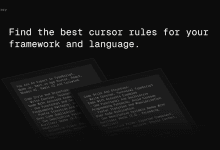Anthropic Tips Engineering Course - Introductory Chapter
Welcome to Anthropic's Tip Project Interactive Tutorial!
Attention: This tutorial does not provide code examples to follow to interact with Claude, for the full tutorial with code examples please visit:
https://github.com/anthropics/courses/blob/master/prompt_engineering_interactive_tutorial/README.md
Course Description and Objectives
This course is designed to provide you with how to engineer Claude A comprehensive step-by-step comprehension of the best tips in the
Upon completion of this course, you will be able to:
✓ Master the basic structure of a good prompt
✓ Recognize common failure modes and learn the "80/20" technique for resolving them
✓ Understanding Claude's strengths and weaknesses
✓ Powerful tips for building common use cases from scratch
Course structure and content
This course is structured to give you multiple opportunities to practice writing and troubleshooting prompts on your own. The course is divided into9 chapters with exercises, and an appendix containing more advanced methods. This course is designed to allow you toComplete the course in chapter orderThe
A "sample playground" area at the bottom of each lesson.You are free to try out the examples in the course here and see for yourself how changing the prompts changes Claude's responses.
Attention: This tutorial uses our smallest, fastest and cheapest model, Claude 3 Haiku. we also have the Two other modelsThe Claude 3 Sonnet and the Claude 3 Opus, which are smarter than the Haiku, with the Opus being the smartest of them all.
When you are ready to begin, click Chapter 1 Lessons to continue.
catalogs
Each chapter contains a lesson and a set of exercises.
junior ranking
- Chapter 1: Basic Cue Structure
- Chapter 2: Keep it clear and direct
- Chapter 3: Assignment of roles
middle level (in a hierarchy)
- Chapter 4: Separating data from instructions
- Chapter 5:Formatted output and Claude expressions
- Chapter 6:Thinking Step by Step
- Chapter 7: Less Sample Tips
high level
- Chapter 8: Avoiding hallucinations
- Chapter 9: Building complex cues (industry use cases)
- Building Complex Prompts from Scratch - Chatbots
- Complex tips for legal services
- Exercise: Complex tips for financial services
- Exercise: Complex Hints for Programming
- Congratulations and next steps
If you have completed all the exercises, you are now among the top 0.1% experts in large language modeling. You have become one of the elite!
The skills you've learned, from thinking step-by-step to assigning roles to writing clearly using examples, can be blended, recombined, and adapted in countless ways.
Cue word engineering is a very new discipline, so it's important to keep an open mind. You could be the next person to discover great cue word tips.
If you want to see more examples of great prompt words for inspiration:
- From our cookbook Examples of cues for learning production-ready words in the middle
- Read our Cue word guide
- Check out our thesaurus Get inspired
- Try our experimental cue Come and let Claude write your cue word templates for you!
- in our Discord Server raise a question
- realize Anthropic API Parameters such as temperature and max_tokens
- If you are interested in academics, you can read some of the cue word engineering on discuss a paper or thesis (old)
- Practice writing prompts for Claude to complete tasks that interest you!
If you'd like to learn advanced cue word tips that are beyond the scope of this tutorial, click through to the appendix!
- Appendix: Beyond Standard Tips
- Chain Tips
- Tool usage (function calls)
Our function calling system and syntax will be improved in the near future. When these improvements are complete, we will provide a full tutorial on function calls.
For now, if you want to learn how to use functions and tools in Claude, see our function calls [(computer) file], [sample code (computing)], [Tool Utilization Library]
- Search and retrieval
Did you know that you can use Claude to search Wikipedia for you? Claude finds and retrieves articles, and then you can use Claude to summarize and synthesize them, write new content from them, and more. It's not just Wikipedia! You can also search within your own documents, whether stored as plain text or embedded in a vector database.
Check out our [RAG cookbook examples] to learn how to add to Claude's knowledge and improve the accuracy and relevance of Claude's answers with data retrieved from vector databases, Wikipedia, the Internet, and more. While you're there, you can also learn how to use certain [embeddings] and vector database tools.
Anthropic Tips Engineering Course.pdf download
© Copyright notes
Article copyright AI Sharing Circle All, please do not reproduce without permission.
Related articles

No comments...




